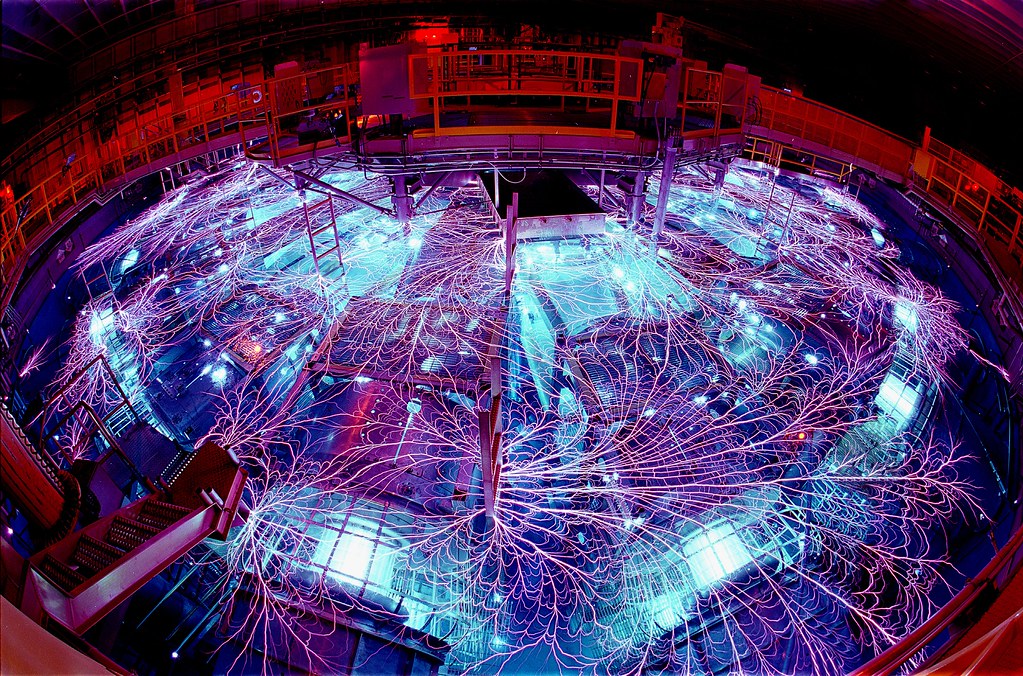X-rays from a nuclear explosion could redirect an asteroid
"Understanding how different asteroid materials vaporize and deflect will be critical for preparing for a planetary defense mission, should the need arise."

When asteroids hurtle towards Earth in Hollywood films, astronauts often deploy nuclear warheads against them in order to save humanity. Now, scientists have found this strategy could actually help deflect an incoming cosmic impact — not by blowing an asteroid up with a nuke, but by exploding one more than a mile above its surface to shower it with X-ray radiation.
As the catastrophic end of the Age of Dinosaurs about 66 million years ago reveals, cosmic impacts can have disastrous effects for life on Earth. "Asteroids aren’t just history — they still impact the Earth today," Nathan Moore, a physicist at Sandia National Laboratories in Albuquerque, N.M., told Space.com. "Apophis, a near-Earth object about the size of the Olympic stadium, flew by Earth just last week."
In 2023, with the Double Asteroid Redirection Test (DART) mission, NASA showed it could potentially deflect a cosmic strike by crashing a spacecraft into the asteroid Dimorphos. Although scientists found the impact successfully altered the orbit of the approximately 525-foot-wide (160 meter) asteroid, the most dangerous asteroids are the size of mountains, and simply colliding a spacecraft against such giants would have minimal effect.
Hollywood movies such as "Armageddon" and "Deep Impact" have suggested using nukes to shatter incoming asteroids or comets. However, scientists have previously suggested that this might only break an asteroid into multiple fragments, changing a lethal bullet headed toward Earth into a deadly shotgun blast instead.
Now, Moore and his colleagues find that nuclear bombs could prevent devastating cosmic impacts if they explode well above the surface of the asteroid. They suggest the X-ray pulse from the outburst could vaporize rock off the asteroid's surface, resulting in a push that could steer a catastrophic strike away from Earth.
In a new study, the researchers employed the Z machine at Sandia National Laboratory, the most powerful laboratory source of radiation in the world. It generates powerful electric pulses, magnetic fields and X-rays to find out how materials react under high pressures and temperatures.
"At present, there is only one way to generate an intense enough X-ray burst to do an experiment like this, and that’s using the Z Machine," Moore said.
Breaking space news, the latest updates on rocket launches, skywatching events and more!
The scientists used electrical pulses from the Z machine to generate powerful magnetic fields. These in turn compressed argon gas to generate plasma, the same form of matter that makes up lightning and stars. This argon plasma produced the X-ray burst the researchers needed to simulate a similar one from a nuclear explosion.
"You have to concentrate a lot of power, about 80 trillion watts, into a very small space, the size of a pencil lead, and very quickly, about 100 billionths of second, to generate a hot enough argon plasma, several millions of degrees, to make a powerful enough X-ray burst to heat the asteroid material surface to tens of thousands of degrees to give it enough push," Moore said.
The scientists hung up a pair of targets in a vacuum, each 0.47 inches (12 millimeters) wide — one made of quartz, the other of fused silica. These materials are similar in composition to known asteroids.
Previous attempts to study various asteroid deflection strategies all held targets fixed in place, "which wasn't very realistic," Moore said. "After all, asteroids in outer space aren’t attached to anything. Besides, how would a mock asteroid accelerate realistically if it was anchored down?"
To overcome this problem, the researchers devised what they called "X-ray scissors." They hung the targets up using thin metal foil just 13 microns thick, or about one-eighth the thickness of an average human hair. This foil vaporized when the X-rays hit it, freeing the targets to accelerate naturally in space.
The X-ray pulses generated vapor plumes from each target and accelerated each one to about 155 mph (250 km/h), matching computational predictions.
"The ability to deflect miniature asteroids in a laboratory using the Z Machine is unlike anything else you can do anywhere else on Earth," Moore said.
Scaling these findings up to a 2.5-mile-wide (4 kilometer) asteroid, with a 1 megaton nuclear bomb exploding about 1.25 miles (2 km) from its surface, the researchers suggested the resulting push could help deflect dangerous asteroids away from Earth.
"For reference, a 4-km [2.5-mile] asteroid is predicted to be large enough to cause global devastation and possible disruption of civilization, according to the NASA Planetary Defense Strategy and Action Plan," Moore said.
Moore noted that asteroids come in a variety of compositions. "This new technique can be used to investigate the deflection response of different asteroid materials," he said. "Understanding how different asteroid materials vaporize and deflect will be critical for preparing for a planetary defense mission, should the need arise."
The scientists detailed their findings online Sept. 23 in the journal Nature Physics.

Charles Q. Choi is a contributing writer for Space.com and Live Science. He covers all things human origins and astronomy as well as physics, animals and general science topics. Charles has a Master of Arts degree from the University of Missouri-Columbia, School of Journalism and a Bachelor of Arts degree from the University of South Florida. Charles has visited every continent on Earth, drinking rancid yak butter tea in Lhasa, snorkeling with sea lions in the Galapagos and even climbing an iceberg in Antarctica. Visit him at http://www.sciwriter.us

